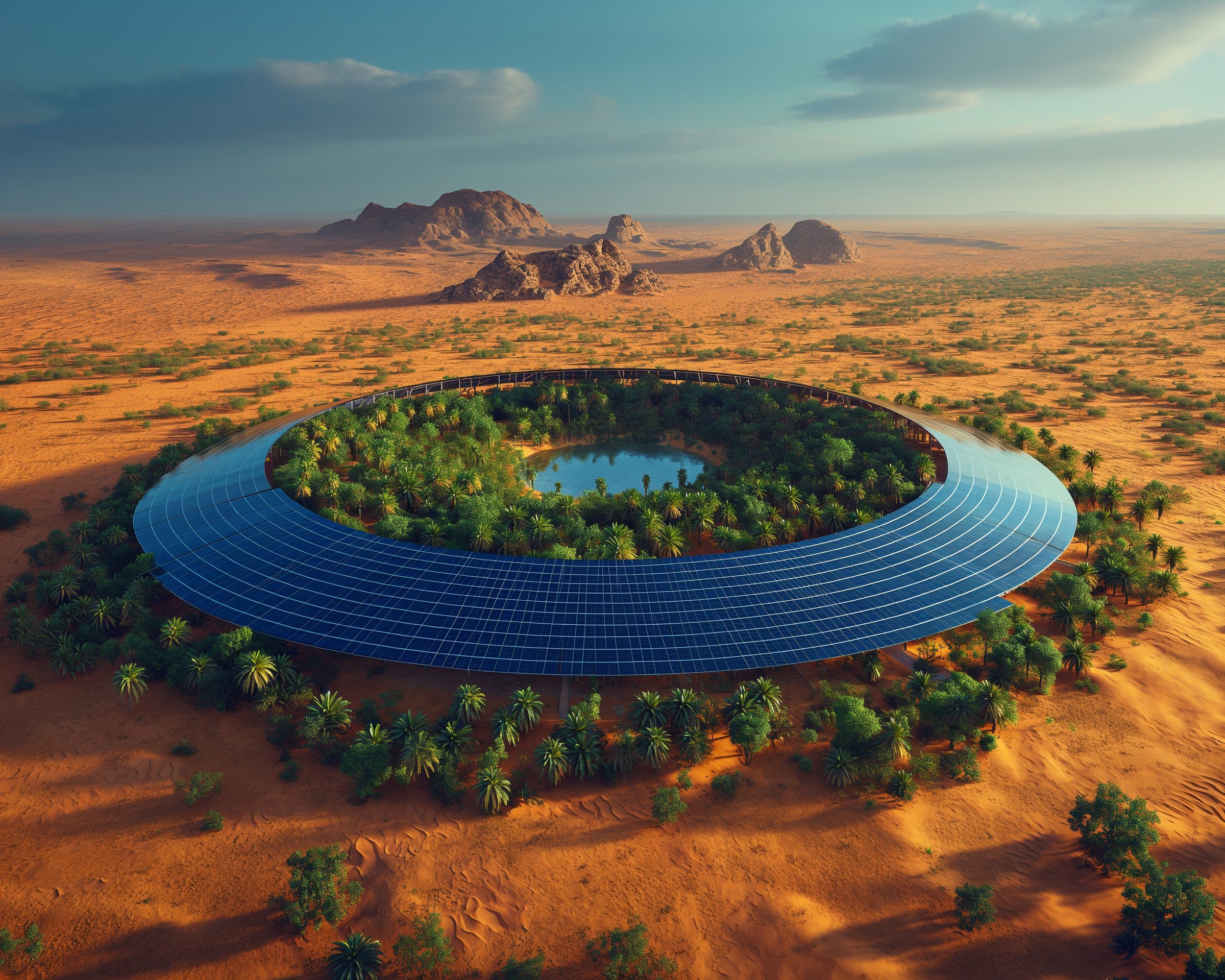Get fresh drinking water from even the driest places on Earth

Did you know there is fresh drinking water available in almost all the air on Earth?
Imagine a singular solar panel, that you could put anywhere on Earth, and it would make enough water for a family to survive. Well that exists, and why it isn’t global news, I have no idea. The SOURCE Hydropanels cost $2000 and can operate in conditions even as dry as 10% humidity. To put that in perspective, today in the Saudi desert, the humidity is 66%.
Ultimately, this is a very slim dehumidifier, that is powered by its outer casing, the solar panel. Because all functionality sits within the unit, installation is simple. Point it at the sun, and wait. The benefits for rural areas are obvious, but there are so many other ways that hydropanels could benefit everyone. Just one panel on each home would provide enough water for a family daily, when you realise how many homes don’t have clean drinking water, even in the developed world, the panels suddenly start to reveal their value.

“It seems wild that Hydropanels aren’t already part of every governments anti-drought protocol. It’s a no-brainer...”
Kane Vato – Editor In Chief
Hydropanels last up to 15 years, which is comparable to the lifespan of desalination systems.
Clean drinking water for 40 cents a day
That’s not a typo.
The panels cost around $2000, and they last around 15 years. That’s under 40 cents per day. Sure, I’m guessing there will be some maintenance costs along the way, but you get the idea.
This is the first time a truly sustainable and off-grid solution to fresh drinking water has become available. Solar panels are often not as efficient as we would hope in the Northern and Southern quadrants of Earth because of cloud coverage and inclement weather, but around the equator band where its primarily dry and sunny, the Hydropanel could offer a truly life changing opportunity for entire communities.
Minimum humidity
10
Max water per panel
10
How it works
Hydropanels use the power of the sun to extract an endless volume of clean, drinking water from the air.
When you start to consider the possibilities with large scale hydro panel installations creating sustainable oasis' even in the driest parts of Earth, it becomes very exciting.
Whilst the images in the gallery above are all artist impressions of how the future of hydro panel installations could look. It certainly opens up the idea of making deserts absolutely inhabitable.
Areas suffering from drought could use the panels as a “guaranteed” backup water source to ensure crops never dry out, and on a larger scale, mass installs could start to create Oasis’ in deserts, making outposts less reliant on external supplies.
Now, whilst the cost of hypdropanels would make this a little prohibitive, history has taught us that eventually cutting edge technology often ends up mass produced at enormous scale, for a fraction of the original price.
If you imagine a farm in the outback of Australia, where every field is lined with hydropanels, the farmer could more easily predict crop cycles, and avoid “bad years” entirely. The possibilities of hydropanels in the developing world are also endless. Instead of having to walk miles to the nearest, often contaminated river, or having to find large scale machinery to dig wells, the hydropanels could supply entire villages with an endless amount of drinking water.
The educational advancement a community can make once the basics are taken care of is truly astounding. Making water available is the first step in eradicating many third-world issues.

It works like magic
How do the SOURCE panels work?
The four step process is relatively simple to understand. Firstly the panel takes in the ambient air via the solar powered fans, the humidity is collected via the hygroscopic material that can absorb moisture. The hydropanel uses the solar power to convert the moisture in to actual droplets of water. It's collected and mineralised with magnesium and calcium, to give it the taste we all know.
How much water can one panel make?
- On average, 3-5 litres per day
- Max production, 10 litres per day
- Operates entirely off-grid
- Each panel, 15 year lifespan









